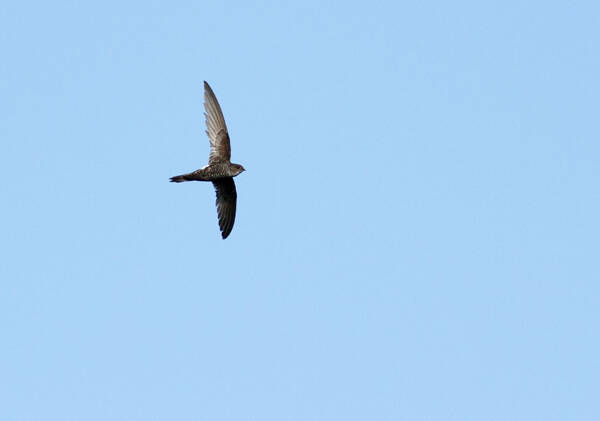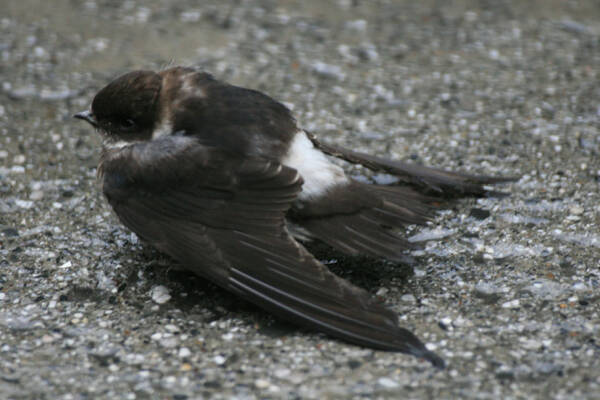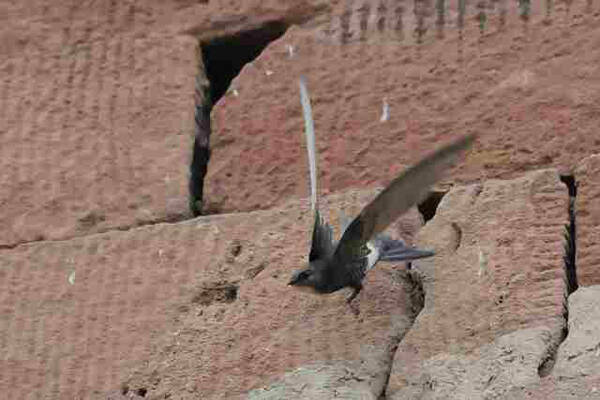Apus pacificus
IUCN
LCBasic Information
Scientific classification
- name:Apus pacificus
- Scientific Name:Apus pacificus,Fork-tailed Swift
- Outline:Climbing birds
- Family:Apodidae Apoda
Vital signs
- length:171-195mm
- Weight:35-51g
- lifetime:
Feature
The waist is white with fine dark brown feather shaft patterns.
Distribution and Habitat
In China, they breed in Northeast China, North China, East China, Eastern Tibet, Qinghai, Central China, South China, and Southwest China. They are also found in Taiwan Island and Hainan Island. Abroad, they breed in Siberia and East Asia, and migrate through Southeast Asia to Indonesia, New Guinea, and Australia for wintering.
White-rumped swifts mainly live on steep slopes, cliffs, especially cliffs near rivers, reservoirs, and other water sources.
Appearance
Dirty brown with white waist, whitish chin, long tail with deep fork, different from the small white-rumped swift in that it is larger and lighter in color, darker in throat, narrower white saddle-shaped spot on waist, slender body, deep fork in tail. Dark brown iris, black beak, purple feet.
Details
White-rumped swifts are summer migratory birds. They migrate here in spring from April to May. They migrate away in autumn from September to October. Some of them stay in Hong Kong and Taiwan.

White-rumped swifts like to fly in groups, often flying back and forth in groups over their habitats. In the morning, they often fly in groups near the rock wall, sometimes approaching the rock wall, sometimes flying in groups, chasing each other, and going back and forth between the nests from time to time. After 9-10 am, they often fly away from the rock wall and fly to the sky or over the forest and tundra. Sometimes they can fly 20 kilometers away from the nest area. On cloudy days, they often fly at low altitudes, often galloping at low altitudes, passing over the ground or water surface. On clear days, they often fly at high altitudes or fly in circles over the forest. The flying speed is very fast, and they often call while flying. The voice is sharp and monosyllabic. Its voice is like "ji-ji-ji-ji-".

White-rumped swifts feed on a variety of insects, including leafhoppers, wasps, wasps, stink bugs, aphid flies, parasitic flies, flies, mosquitoes, spiders, mayflies, etc. They prey in flight. They fly slower than needle-tailed swifts, and make irregular wing beats and turns when feeding. Sometimes they nest on buildings together with common house swifts.

Listed in the 2012 Red List of Threatened Species of the World Conservation Union (IUCN) ver 3.1 - Least Concern (LC).
This species has been included in the "List of Terrestrial Wildlife with Important Economic and Scientific Research Value under State Protection" issued by the State Forestry Administration of China on August 1, 2000.








